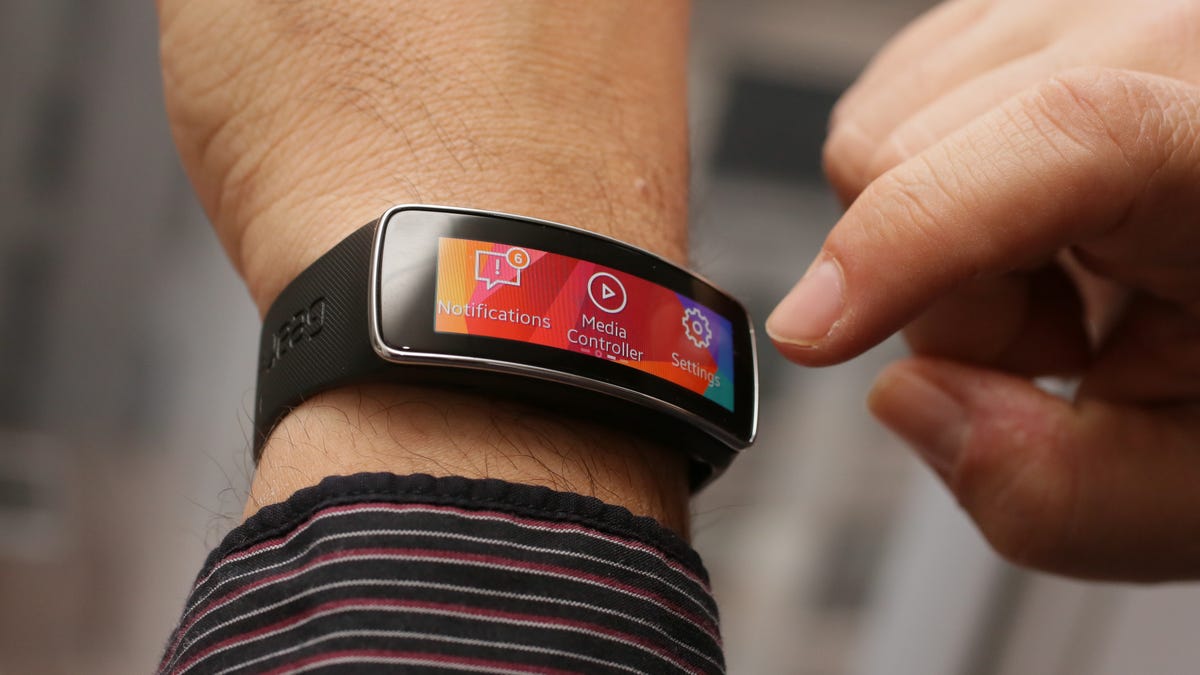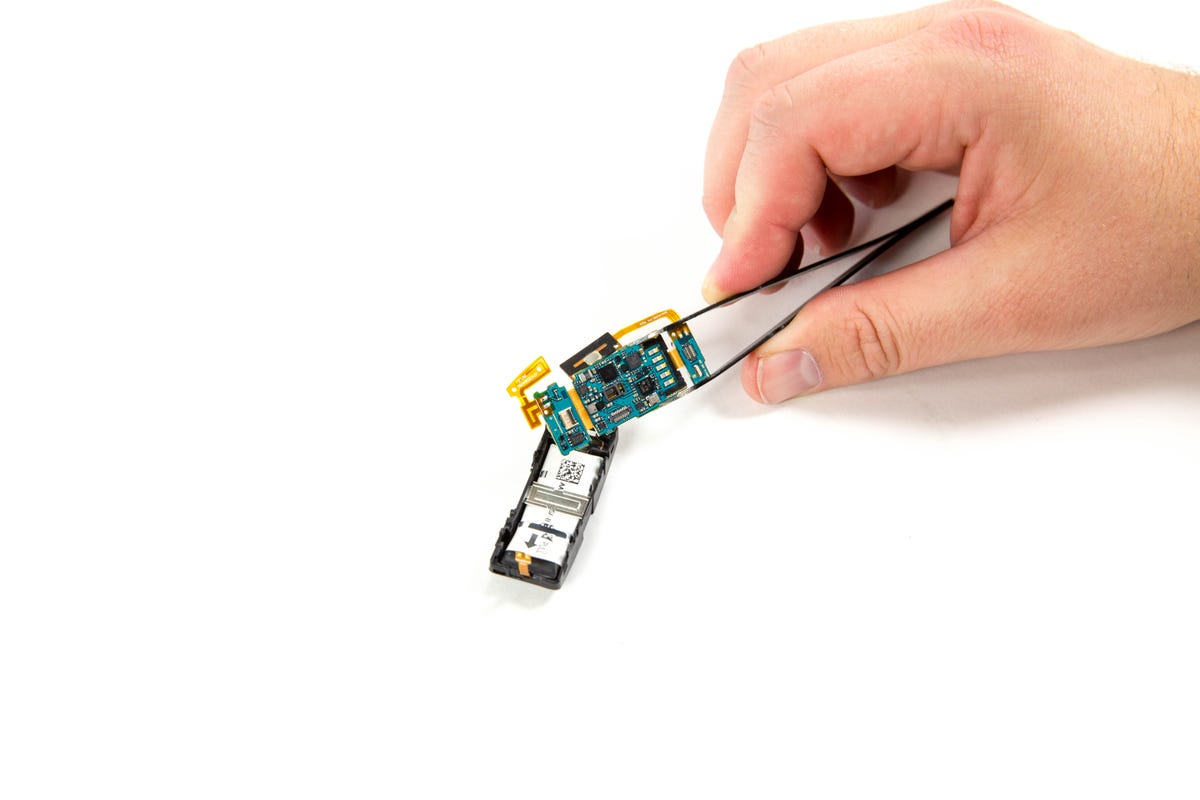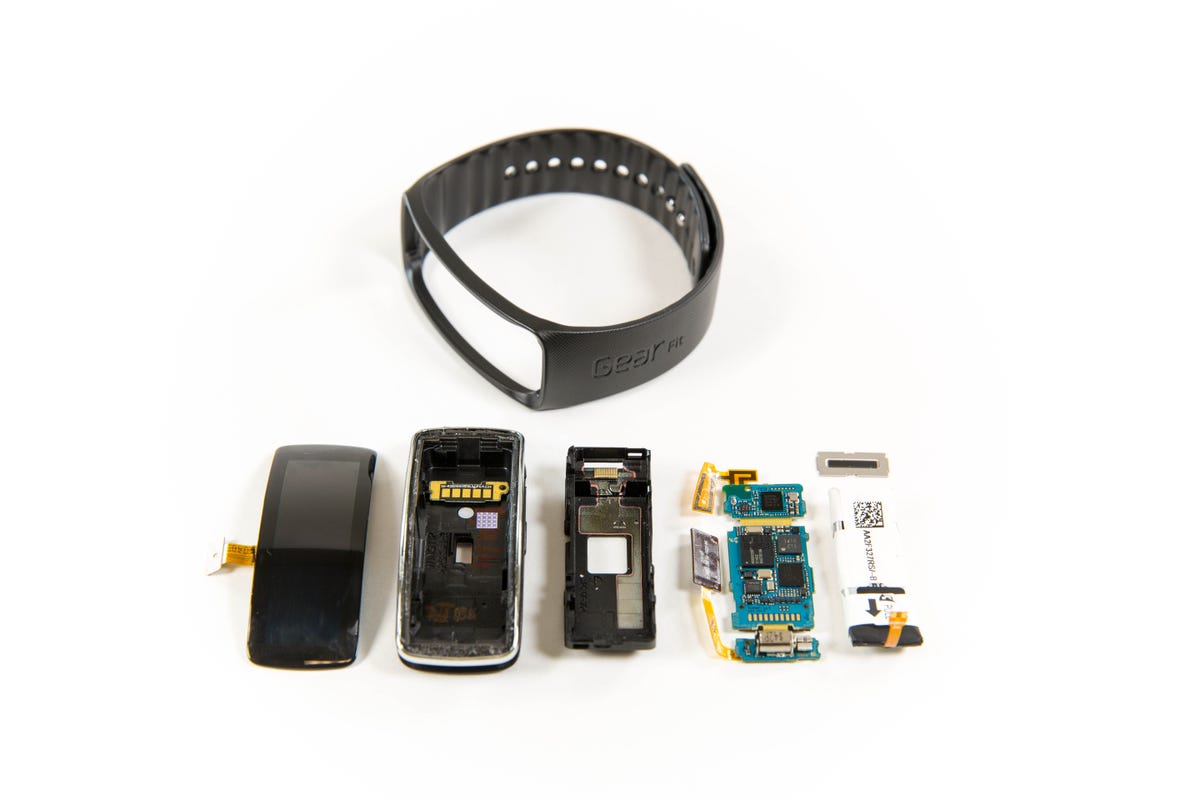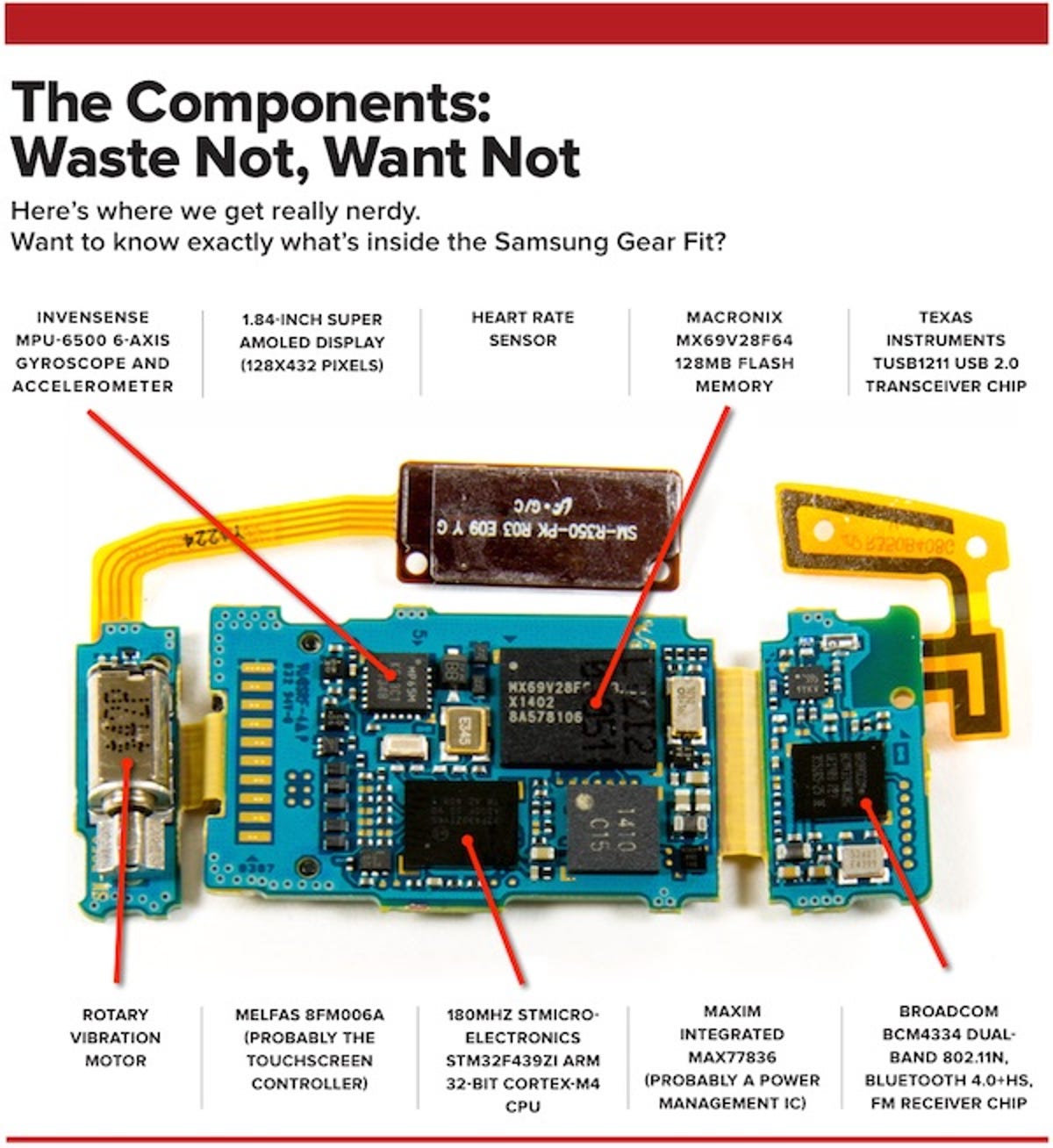The Samsung Gear Fit is one of the best-looking wearable devices on the market. Its AMOLED display looks great, and the touchscreen interface is easy to use. The Fit’s sleek, curved design feels good on the wrist, and it’s a comfortable weight too.

Sarah Tew
There’s a lot powering this little looker. The Fit packs in a 1.84-inch Super AMOLED touchscreen display, a 160MHz ARM Cortex-M4 CPU, an accelerometer, a gyroscope, Bluetooth 4.0 LE, and an optical heart rate sensor. In his test, CNET senior reviews editor Scott Stein found that he could get maybe two comfortable days of use before a recharge.
For more information on the Gear Fit, including real-world tests, check out Scott Stein’s full CNET review .
Given the Fit’s dimensions (2.26 inches long by 0.92 inch wide by 0.47 inch thick), I was curious to find out how Samsung packed so much tech into such a tiny space, so I broke out a screwdriver and ripped one apart. Here’s what I discovered.
Disassembling the Gear Fit
For more teardown images of the Gear Fit, check out the full Cracking Open gallery on TechRepublic.
After removing the wristband, I used a heat gun to heat the front of the device, loosening the adhesive that holds the curved display and front-panel assembly to the outer shell.


Colin McDonald/CBS Interactive
Then, starting along the right edge and holding the Fit lengthwise, I gently pried off the display, being extremely careful along the left edge not to damage the thin ribbon cables that connect the display and touchscreen to the motherboard. (I do my best to avoid damaging the devices we crack open. Unfortunately, during the Fit teardown, I accidentally sliced the tiny ribbon cable that connects the touchscreen to the motherboard.)
With the display assembly separated from the outer shell but still attached to the motherboard, I removed the internal, plastic frame that holds the battery, button contacts, and motherboard from the outer shell.
Next, I detached the two cables that connect the display assembly to the motherboard. The larger of these cables is held to the frame with adhesive, so I had to be extra careful when removing the display.


Colin McDonald/CBS Interactive
Before removing the motherboard, I disconnect- ed the battery and gently pried the ribbon cable for the power button away from the plastic frame. Then, I removed the three-part motherboard from the frame.
Last, I removed the battery, and our teardown was complete. The whole teardown process took about 30 minutes. Beyond satisfying a healthy curiosity for knowing how things work, seeing the hardware inside a device and understanding how it’s built make it easier to diagnose problems and make repairs. It also helps us understand how technology is evolving.


Colin McDonald/CBS Interactive
For more teardown images of the Gear Fit, check out the full Cracking Open gallery on TechRepublic.
What the guts tell us
- Well-built and packed with tech: I’ve dissected nearly a dozen Samsung smartphones, tablets, and laptops. In nearly every case, I’ve been impressed with their engineering. The Fit is no exception. Its display assembly is securely attached to the outer shell but not overly difficult to remove. The major components (battery, display, and mother- board) are separate parts and can be replaced in- dependently, and there’s not a bit of wasted space inside the shell. The Fit also has an IP67 rating, which means it’s dustproof and water-resistant up to 1 meter for up to 30 minutes.
- Opening the case requires display removal: Removing the Fit’s curved display assembly is by far the most difficult and time-consuming step in the teardown process. It’s very easy to damage the extremely thin ribbon cables that connect the touchscreen and display to the motherboard.
- Three-piece motherboard: Samsung split the Fit’s motherboard into three pieces, probably to accommodate the device’s curved outer shell.


Colin McDonald/CBS Interactive
- Special charging connector saves space: Like the Pebble Steel, Fitbit Flex, Jawbone Up, and many other wearables, the Fit requires a special charging connector. While a standard micro-USB port might be more convenient, it would take up much more space inside the case than the Fit’s flat charging terminals. Given the small size of wearables, I don’t see manufacturers abandoning custom connectors anytime soon.
- Replaceable battery: The Fit’s 210mAh lithium-ion battery isn’t soldered to the mother- board and can be replaced (if you can find one online as a spare part). Unfortunately, you have to completely disassemble the device to do so.
Great engineering doesn’t always make a great device
The Gear Fit is an interesting wearable that tries to be both a smartwatch and a fitness tracker. Despite the device’s top-notch engineering, many reviewers don’t believe the Fit really shines in either category.
As our own David Stein wrote, “Its odd-shaped screen, limited battery life, higher price, and need (for now) to be tied to Samsung phones add up to an intriguing but limited gadget.”
But we can still appreciate the way it’s put together.





